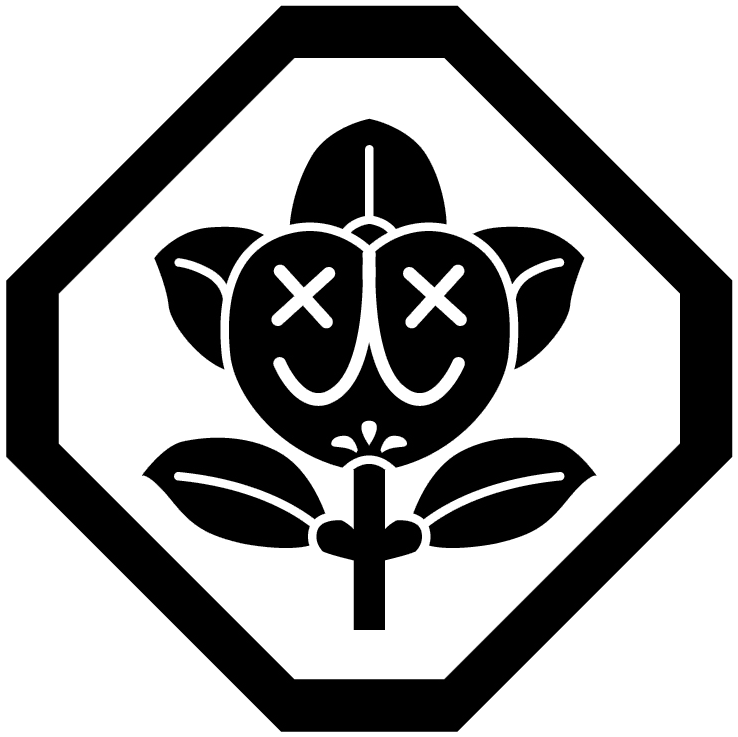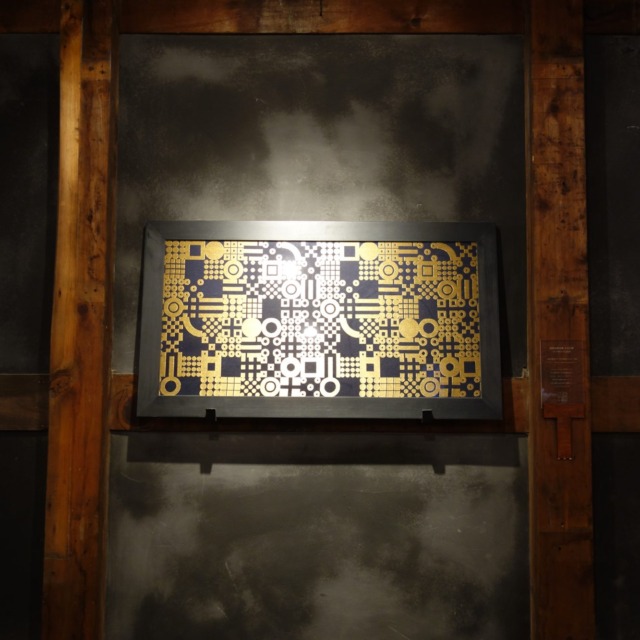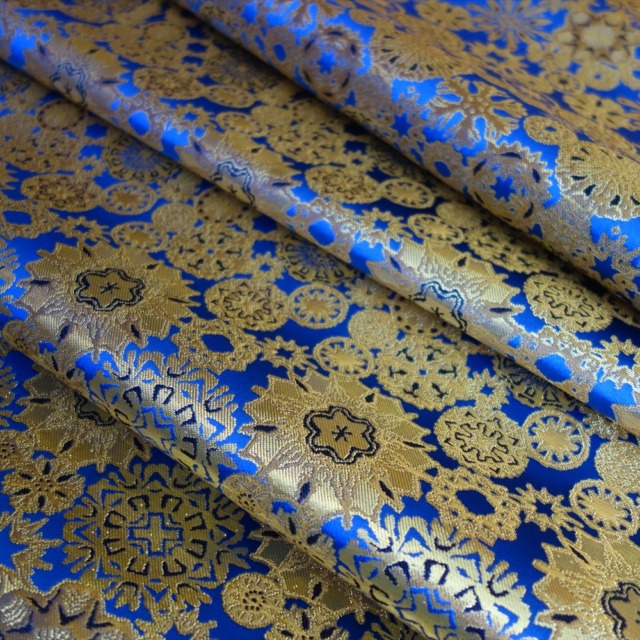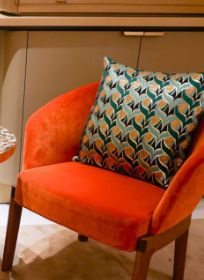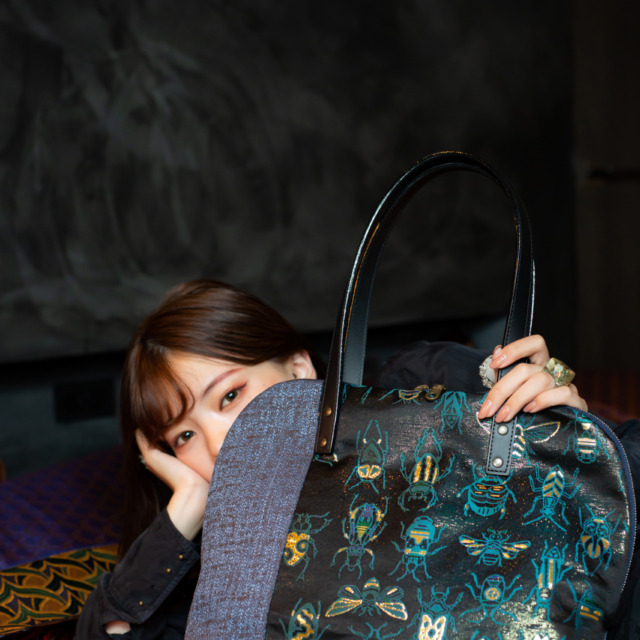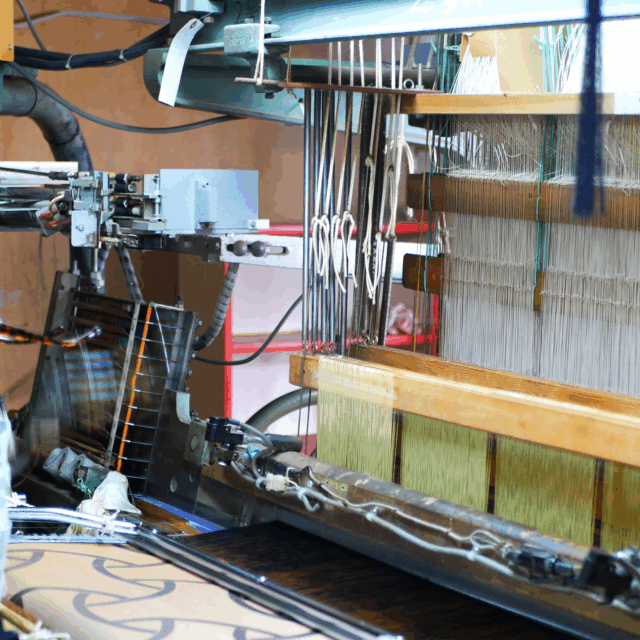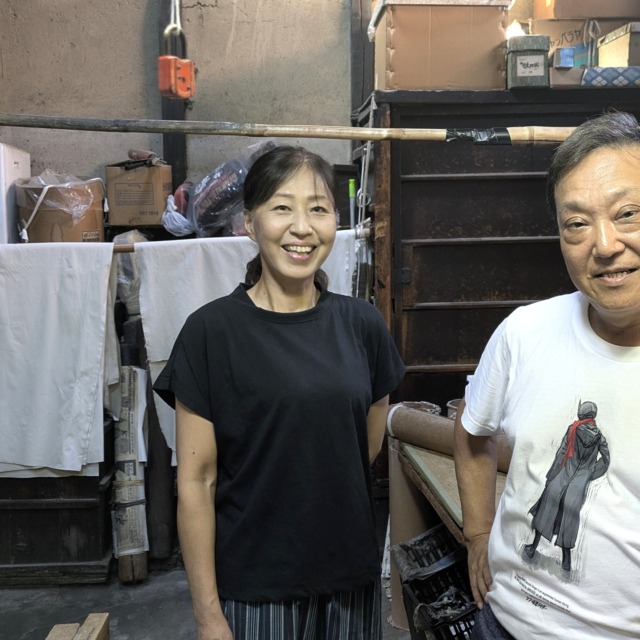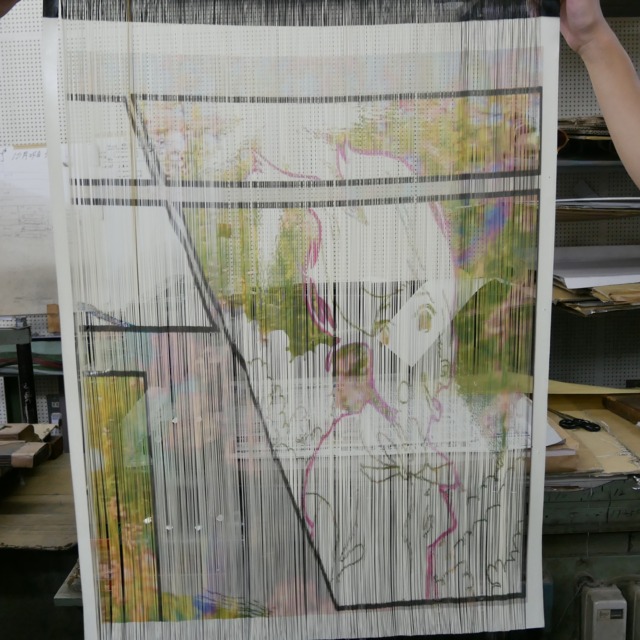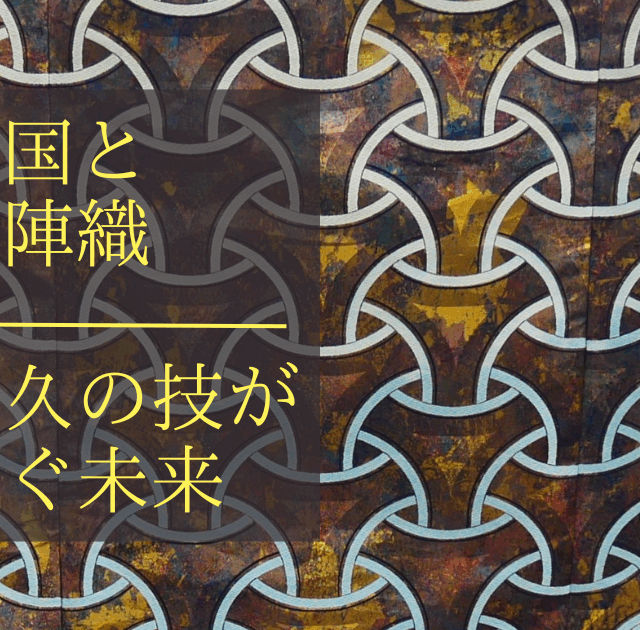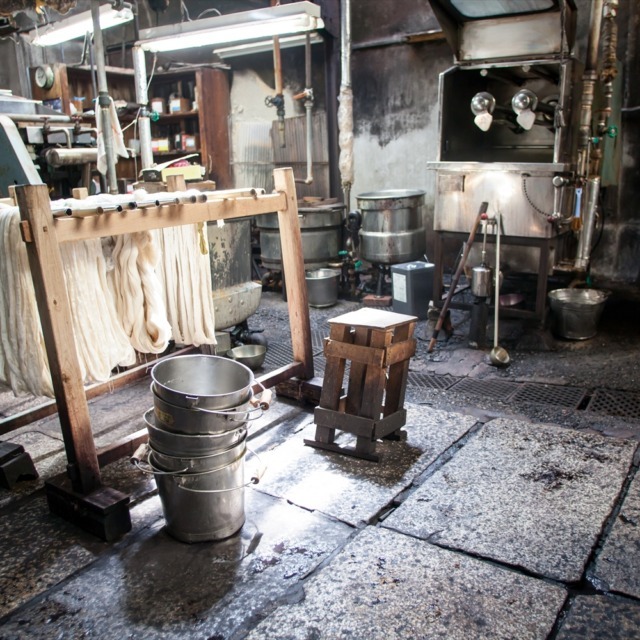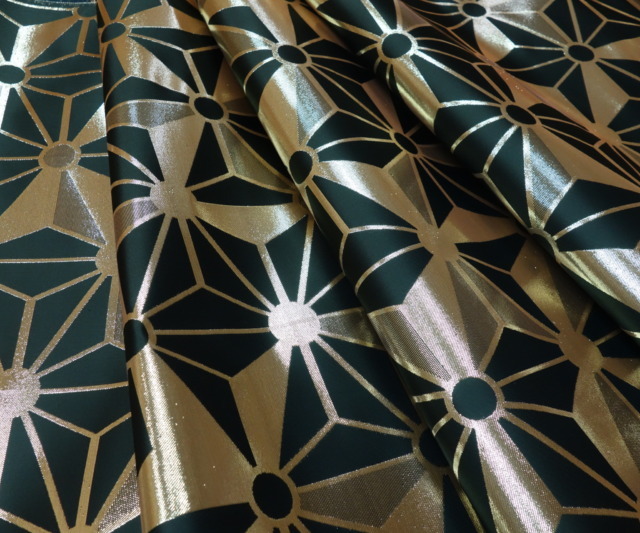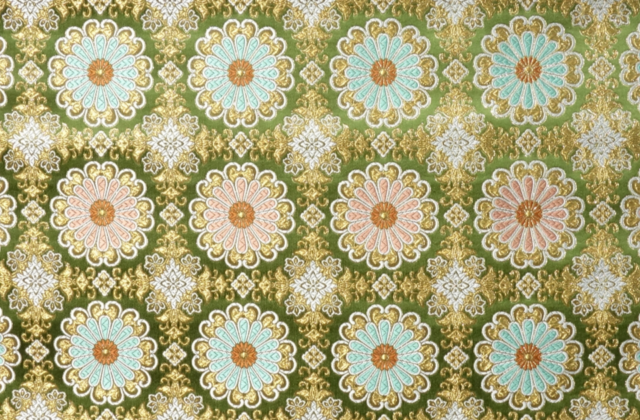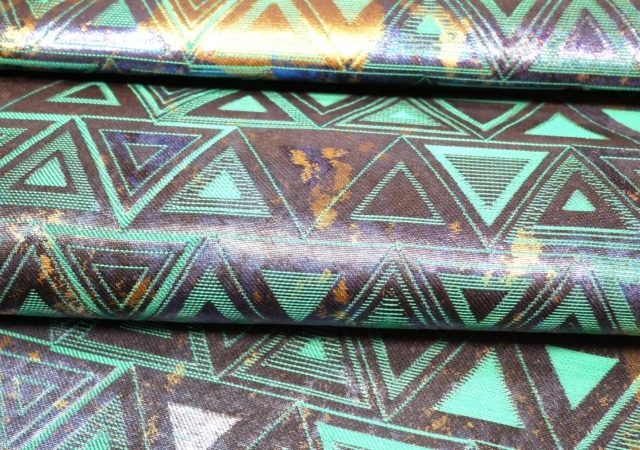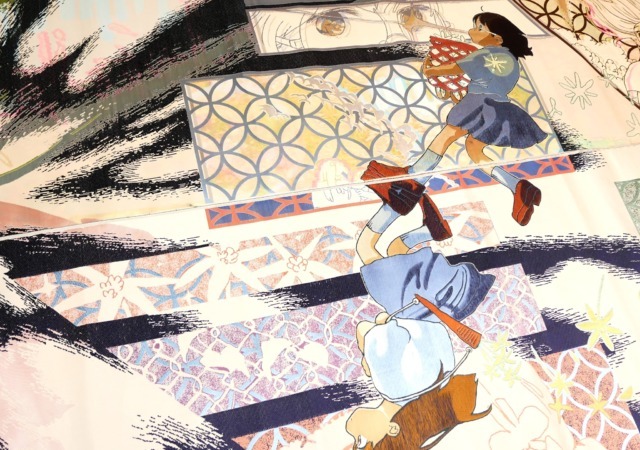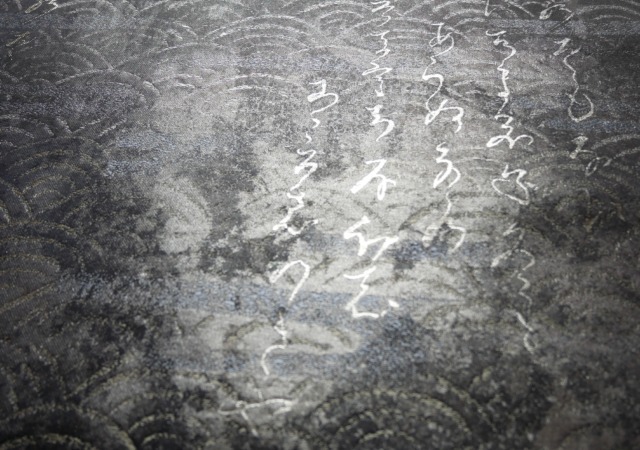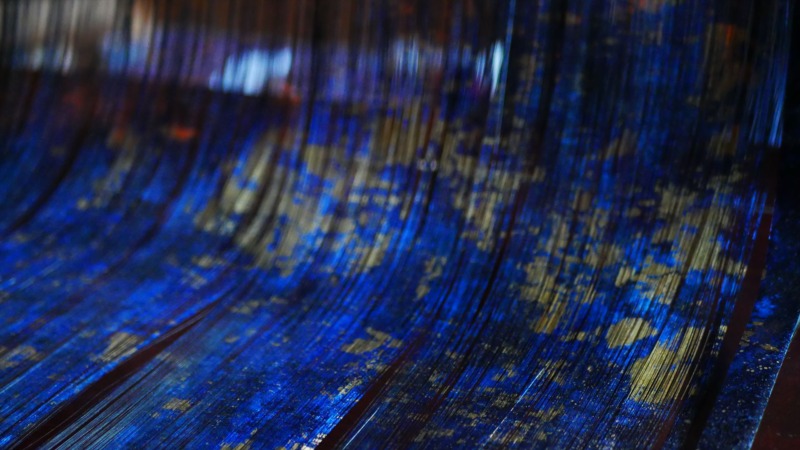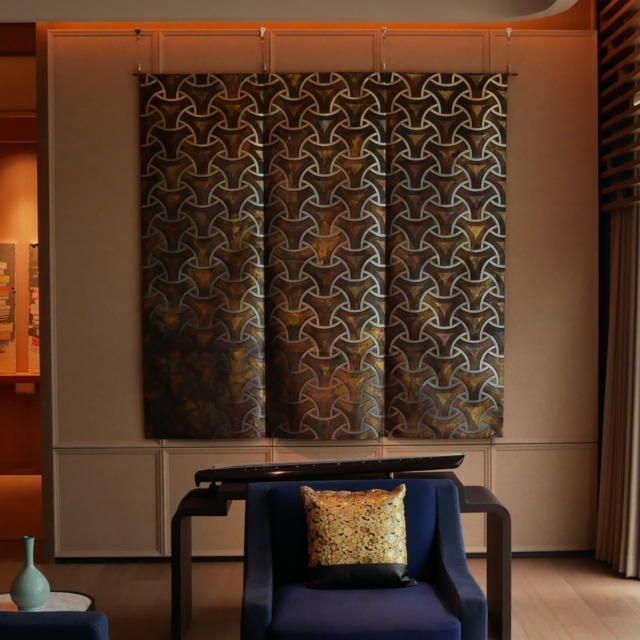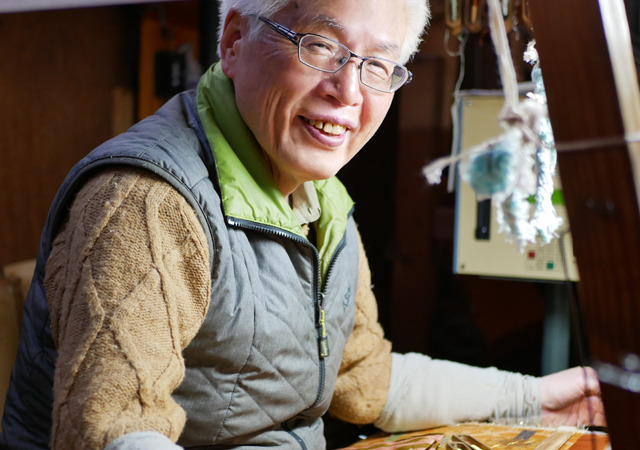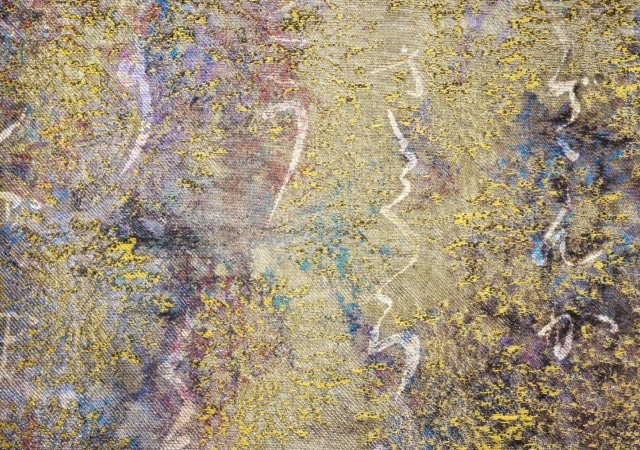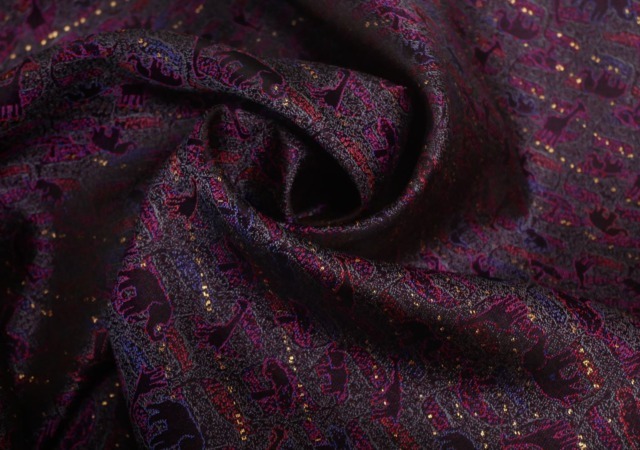History and Tradition
Since its establishment, Nishijin Okamoto has carefully preserved the traditional technique of “HIKIBAKU”.
We weave many silk fabrics using “honkin hikibaku” or “honkin patterned foil” by using “foil thread,” a short, flat thread made of Japanese paper, lacquer, and honkin foil.
The technique of “honkin hikibaku” came from China, and is now woven only in Nishijin and a part of Tango area.
We mainly use the two types of “honkinhikibaku” shown on the right: shiny “hikari-haku” and subdued “sabi-haku”.
We can also make “foil threads” in various gold colors, such as reddish, etc., depending on the gold content. All of the threads are special threads prepared according to the customer’s request.

”HIKIBAKU” is a thread made to fit the size of the cloth to be woven.
The four corners of the Japanese paper are cut off at the end, but they are necessary for weaving.
In the case of our gold hikibaku, the discarded parts are also covered with gold leaf, so we collect the gold leaf and recycle it as an urban mine.
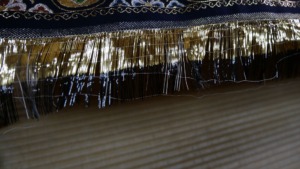
In addition to honkinhikibaku, we also love to use “HIKIBAKU” with patterns drawn on them called patterned foil.
This patterned foil is a textile that requires a difficult technique to weave in the correct order from the beginning to the end of the paper in order to reproduce the pattern.
We usually use “HIKIBAKU” with elegant, light designs.
As time goes by, the demand for “HIKIBAKU” products has decreased and the supply of the material has also decreased, and we are now in a situation where we do not know how long we will be able to obtain “foil thread” for our beloved “HIKIBAKU” fabric.
Therefore, in order to protect the “foil thread” material, our techniques, and traditions, we are pushing the “HIKIBAKU” weaving technique to the forefront and selling it more than ever before.
The Challenge of Newly Patterned Foil Drawing Foil
In the late fall of 2023, we released “Nishijin kinran brocade HIKIBAKU with pearl powder and silver foil patterned foil,” a silk fabric made with our custom-made “pearl powder and silver foil patterned foil”.
Making “foil threads”
Burnt foil, which is processed and discolored silver leaf or silver foil on Japanese paper, is used. Pearl powder was also employed this time.
Adoption of pearl powder
While it is common for woven fabrics to be gilded and used as decoration, the ability to weave in pearls as “foil threads” is a technique unique to Nishijin.
Nishijin textiles have a historical background of using sea gems such as mother-of-pearl inlays, and corals as high-class materials like hon-kinpaku (gold leaf) for a long time.
Powdered pearls that are out of product standard from pearl farmers are used.
Gives pearls a unique softness to the coloration of metals such as gold and silver foil.
Effective as a recent SDGs and sustainable initiative.
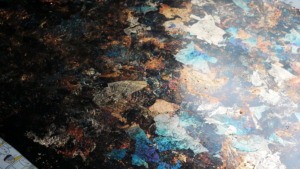
This time, four types were produced. The image above shows hikibaku in its pre-cut paper state.
This is the hiki foil cut into “foil threads”. In this state, the four corners of the foil are connected and only the middle is cut.
It is important that the four corners are connected for weaving.
If all the foil is cut off, it will be difficult to store and the order of weaving will not be clear, so it is cut off as thread before weaving.
Draw Foil Cutting
Some craftsmen are also available to cut this drawing foil.
This time, we went to Takeuchi Cut studio for cutting.
The cutting is done with a very large machine called a guillotine.
We felt that this is a skill that requires experience.
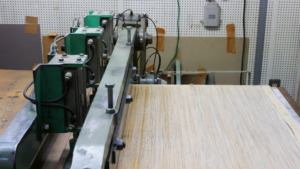
Weaving on a power loom equipped with a pulling foil device
The “foil threads” are woven on a shuttle power loom equipped with a foil pulling device, in a process called “Sequential Pulling,” in which the threads are inserted one by one in order to prevent the pattern from shifting, similar to a kasuri weaving.
This is a very stressful weaving process, starting with the preparation of the foil threads.
Until “Nishijin kinran brocade HIKIBAKU with pearl powder and silver foil pattern” is woven.
Below is a video of the process of weaving “Nishijin kinran brocade with pearl powder and silver foil pattern”.
HIKIBAKU is a short, flat thread of thinly cut Japanese paper with two sides, and the process of cutting it is one of the traditional craft skills.
We can weave HIKIBAKU on both hand looms and power shuttle looms.
We value the techniques and materials handed down from our ancestors and will continue to protect Nishijin brocade.
*One of our missions at Okamoto Nishijin is to increase the number of traditional craftsmen and to create new jobs for them. We will introduce you to our craftsmen, so please contact us if you have any questions.
